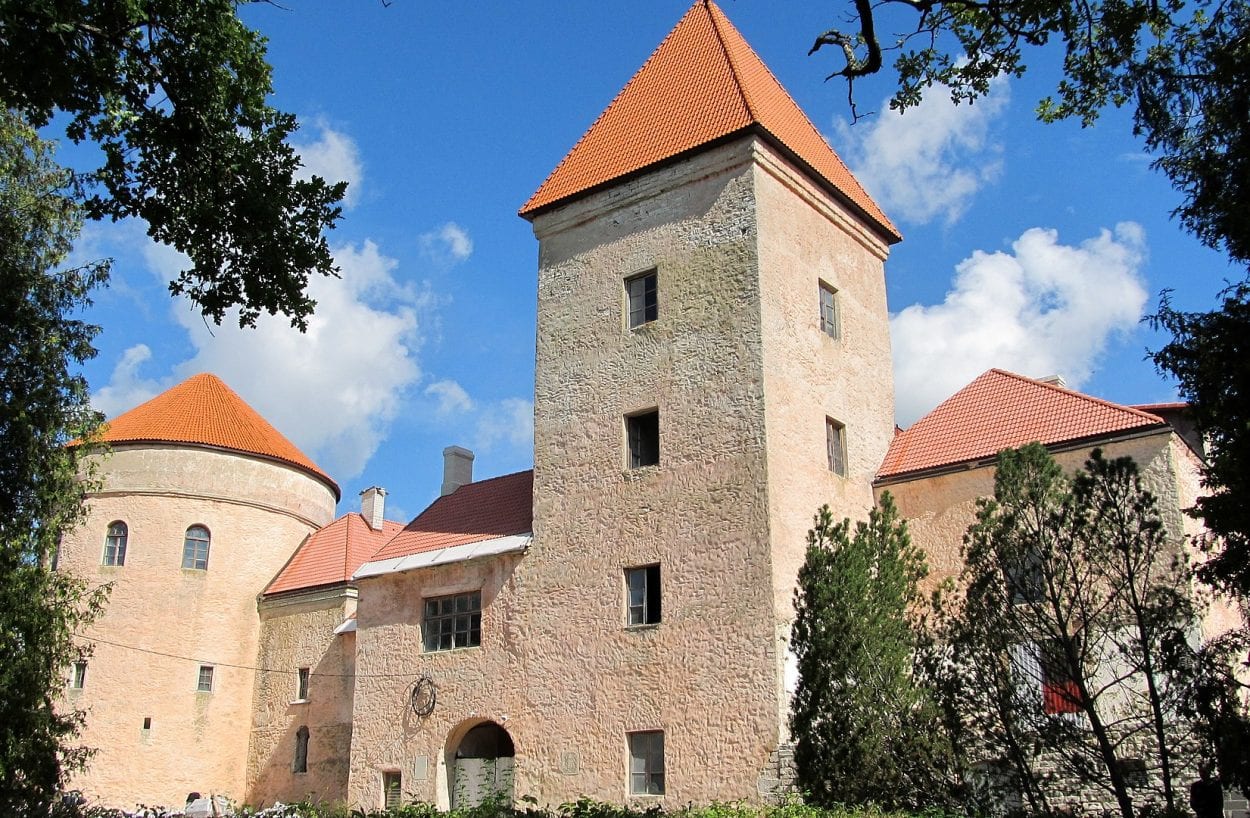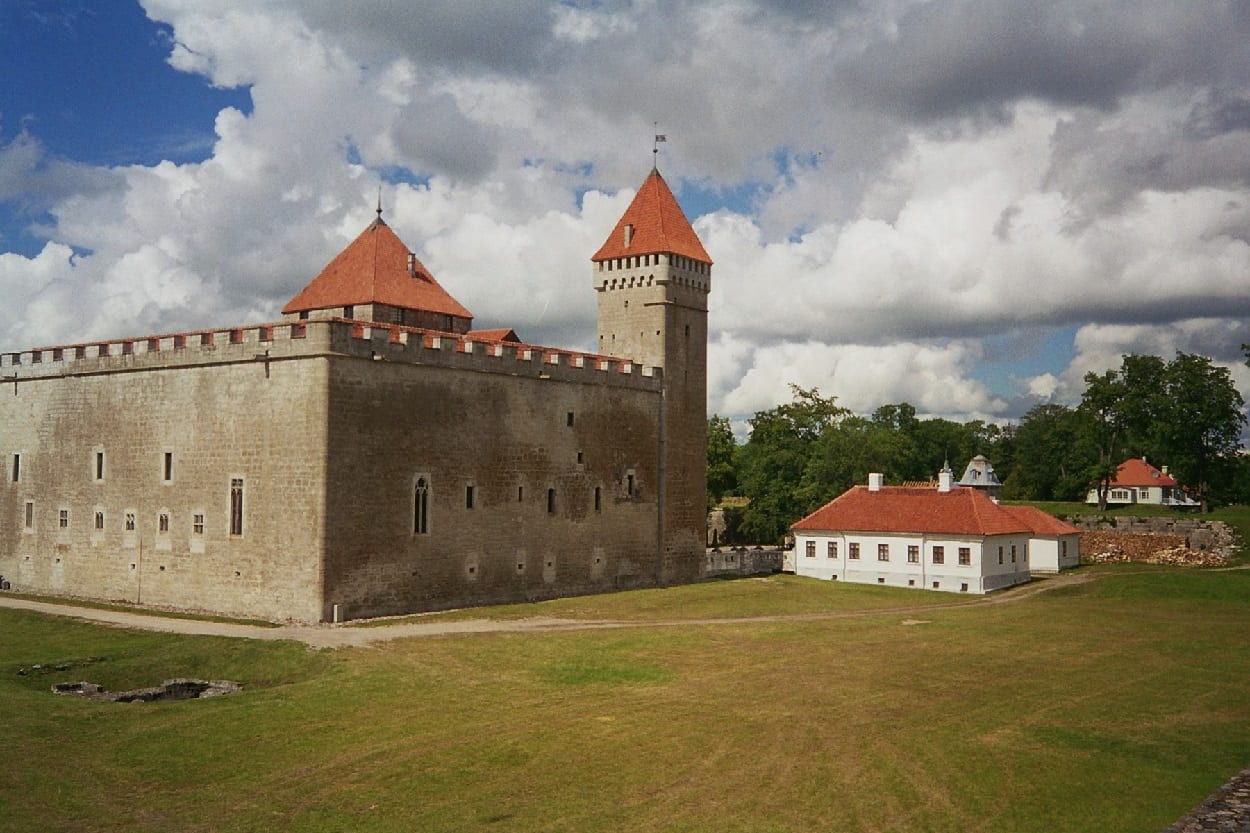1 – Paide Castle
A castle was built in Paide by order of Konrad von Mandern, master of the Livonian Order, sometime in 1265 or 1266. With its six storeys, the tower has always been the core of the castle complex. The fortress was strengthened during the 14th and 15th centuries, when the surrounding walls were enlarged and towers added.
During the Livonian War, the castle was repeatedly besieged by Russian troops, and in 1573 it was occupied by troops loyal to Ivan the Terrible. In 1895-1897 restoration work was carried out on the central tower and some other parts of the castle. However, in 1941, during World War II, retreating Soviet troops blew up the central tower and it was not repaired until after Estonia regained its independence, in 1990-1993.

2 – Rakvere Castle
Rakvere Castle is located in Rakvere, Northern Estonia 20 km south of the Gulf of Finland. Settlement in the area originally dates from the 3rd-5th centuries AD, but the first fortifications was built around 1252. This was a wooden stronghold constructed by the Danes called Wesenbergh.
When the Danish king sold Danish Estonia to the Livonian Order in 1346, a larger stone castle was built to defend the eastern border. During the Polish-Swedish War of 1600-1629, the castle was partly blown up by the Polish in 1605, and later by the Swedes. The castle has lain in ruins ever since.

3 – Hermann Castle / Narva fortress
Hermann Castle or Narva fortress was founded in 1256 by the Danes, but the first stone castle was built in the beginning of the 14th century in response to several conflicts with the neighbouring Russians. In 1347 King Valdemar IV of Denmark sold Northern Estonia, including Narva, to the Livonian Order, who rebuilt the building into a convent building according to their needs. The stronghold has for the most part preserved the ground plan with its massive wings and a courtyard in the middle.
The Herman Tower was also completed at the time of the Order, necessitated by the establishment of Ivangorod Castle by the Russians to the opposite side of the Narva River in 1492.

4 – Koluvere Castle
Koluvere Castle, also Koluvere Episcopal Castle is a castle in Koluvere, Lääne County, in western Estonia. A castle has existed on the strategic location since the 13th century. In 1439, it came into possession of the bishop of Saare-Lääne and functioned as one of the main residences of the bishop.
Between 1646 and 1771, the castle belonged to the von Löwen family. By then it had lost its military significance and was henceforth used as an aristocratic residence. In 1771 it passed into the hands of Grigory Orlov after which it became the property of the Empress Catherine the Great.

5 – Haapsalu Castle
Haapsalu Castle is a castle stronghold with cathedral in Haapsalu, Estonia, founded in the thirteenth century as the seat of the Bishopric of Ösel-Wiek.Construction, widening and reconstruction of the stronghold went on throughout several centuries, with the architecture changing according to the development of siege weapons.
In the 17th century, the castle was no longer used as a defensive building by the Swedes who now ruled the Swedish Estonian Province. In the course of the Great Northern War in 1710, Estonia fell under Russian rule and the walls were partially demolished at the command of the Peter I of Russia, turning the castle in effect into ruins.

6 – Toolse Castle
Toolse castle was a crusader castle belonging to the Teutonic Order located in the Vihula Parish, Lääne-Viru County, in northeastern Estonia. It was completed in 1471, where at one point, it was the northernmost outpost of the Holy Roman Empire.

8 – Põltsamaa Castle
Põltsamaa Castle, also Põltsamaa Order Castle, is a castle in Põltsamaa, Jõgeva County, in eastern Estonia. The castle was founded by the Livonian Order in 1272, as a purely defensive crusader fortress. During the course of the Livonian War, the castle was for a period occupied by Polish troops and between 1570 and 1578 served as the official residence of Duke Magnus of Holstein, who aspired to create a Livonian kingdom with the help of Tsar Ivan the Terrible of Russia.
In 1941 the castle was almost destroyed by bombing. Today, only ruins remain of the main buildings, the church, although also damaged, has been restored, as have some of the annexes.

9 – Toompea Castle
Toompea Castle (Estonian: Toompea loss) is a castle on Toompea hill in the central part of Tallinn, the capital of Estonia. The castle, an ancient stronghold site in use since at least the 9th century, today houses the Parliament of Estonia.
In 1227, the castle was taken over by the Order of the Brethren of the Sword, who initiated rebuilding schemes. The castle they started building is to a large extent the castle that is visible today. The castle again befell the Danes just ten years later, but was sold to the Teutonic Order in 1346, and would remain in their hands for the remainder of the Middle Ages.

10 – Kuressaare Castle
Kuressaare Castle, also Kuressaare Episcopal Castle, is a castle in Kuressaare on Saaremaa island, in western Estonia. The earliest written record mentioning Kuressaare castle is from the 1380s, when the Teutonic Order began its construction for the bishops of Ösel-Wieck.
From the outset, it was a stronghold belonging to the bishop of Saare-Lääne (German: Ösel-Wiek) and remained one of the most important castles of the Bishopric until its dissolution during the Livonian War. In 1904–12 the castle was restored by architects Hermann Seuberlich and Wilhelm Neumann. It underwent a second restoration in 1968, this time led by architect Kalvi Aluve.

Header Image Credit : Ad Meskens – CC BY-SA 4.0




